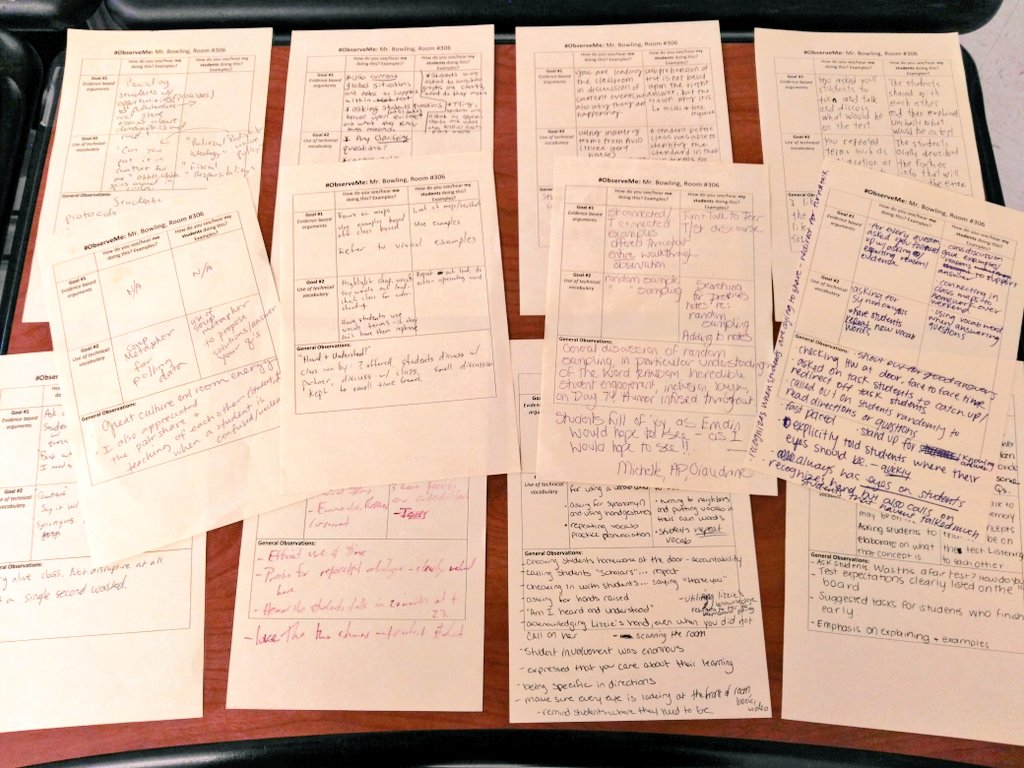#ObserveMe
Constructive feedback is so important for growth, which is why I think the recent #ObserveMe movement has been so great. It is awesome to see so many teachers all over the place opening their doors to their peers. Here’s a photo posted by @nate_bowling which pretty much sums things up; it’s been “…better than any evaluation of my career,” according to Nate.

Various tweets and blog posts have been written revolving around this topic, but two recent math-related posts stick out to me. The first is by Jennifer Bell (@jkjohnsonbell) and she had the brilliant idea of focusing her observations on Number Talks. What a great idea to hone in on just a specific practice for this! She goes into nice detail on her feedback from the MTBoS, her peers, and math coaches all revolving around Number Talks.
Dylan Kane (@math8_teacher) shared some compelling thoughts the other day about this, as well. Both of Jennifer and Dylan mentioned something to the idea that peer observation tends to be encouraging, but often lacking of any real feedback that will lead to improvement. It seems that what Dylan has found most useful has been student feedback that he gets via Google forms. He has categorized areas in which students are to give specific feedback, and it really looks like it’s working. The students have been honest and given real things that he can take and use right away.
A big takeaway for me here is that I should be looking for feedback wherever I can get it. The feedback we get from various types of people (fellow teachers, other math teachers, MTBoS, coaches, or our students themselves) will all give us useful insights from different perspectives which can be put together as a whole in a powerful way to move us forward.
PS – I just thought of another stakeholder here – parents. Have any of you utilized parents in a positive way to help your teaching? What would that look like?
~ by Matthew Engle (@pickpocketbme)
|